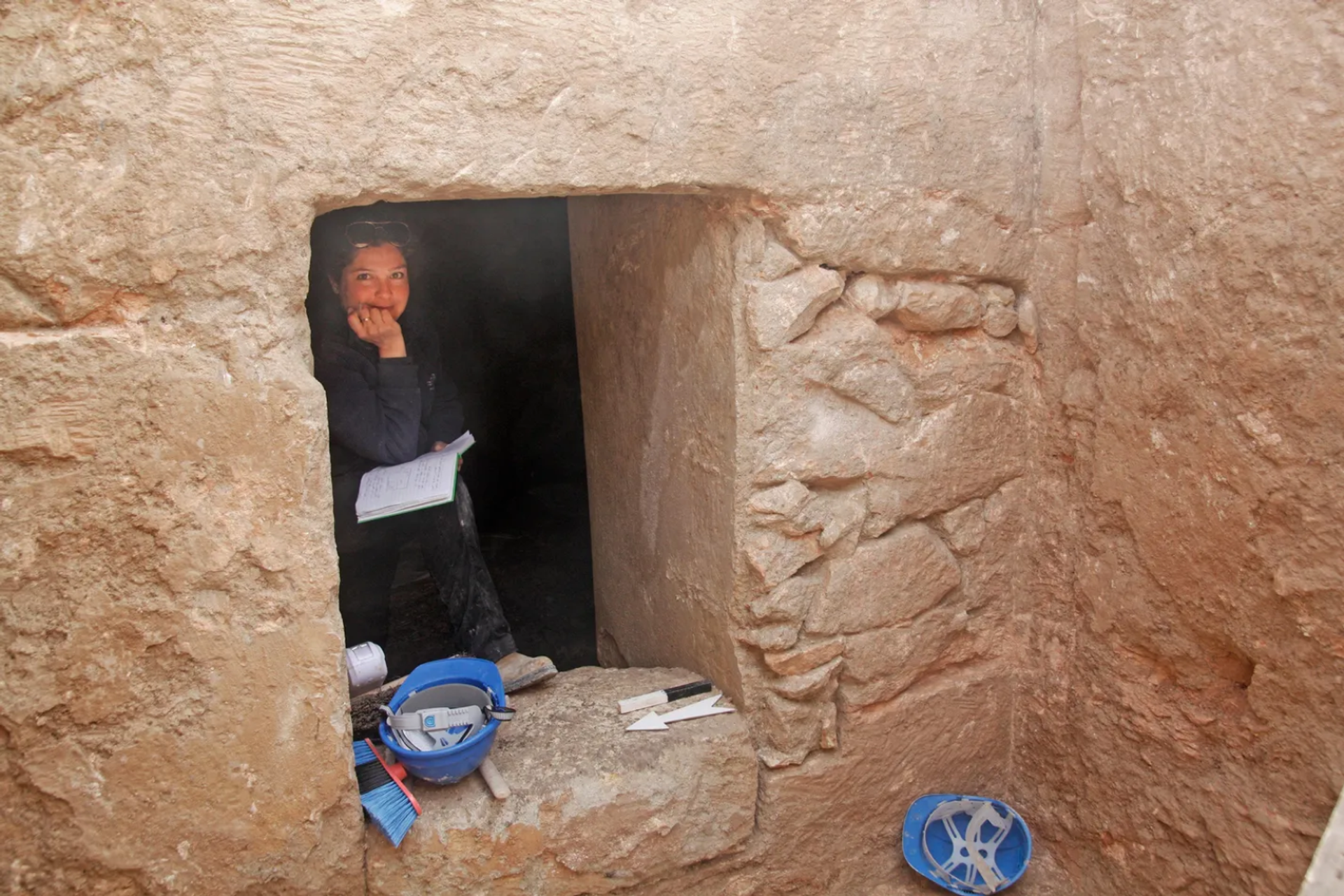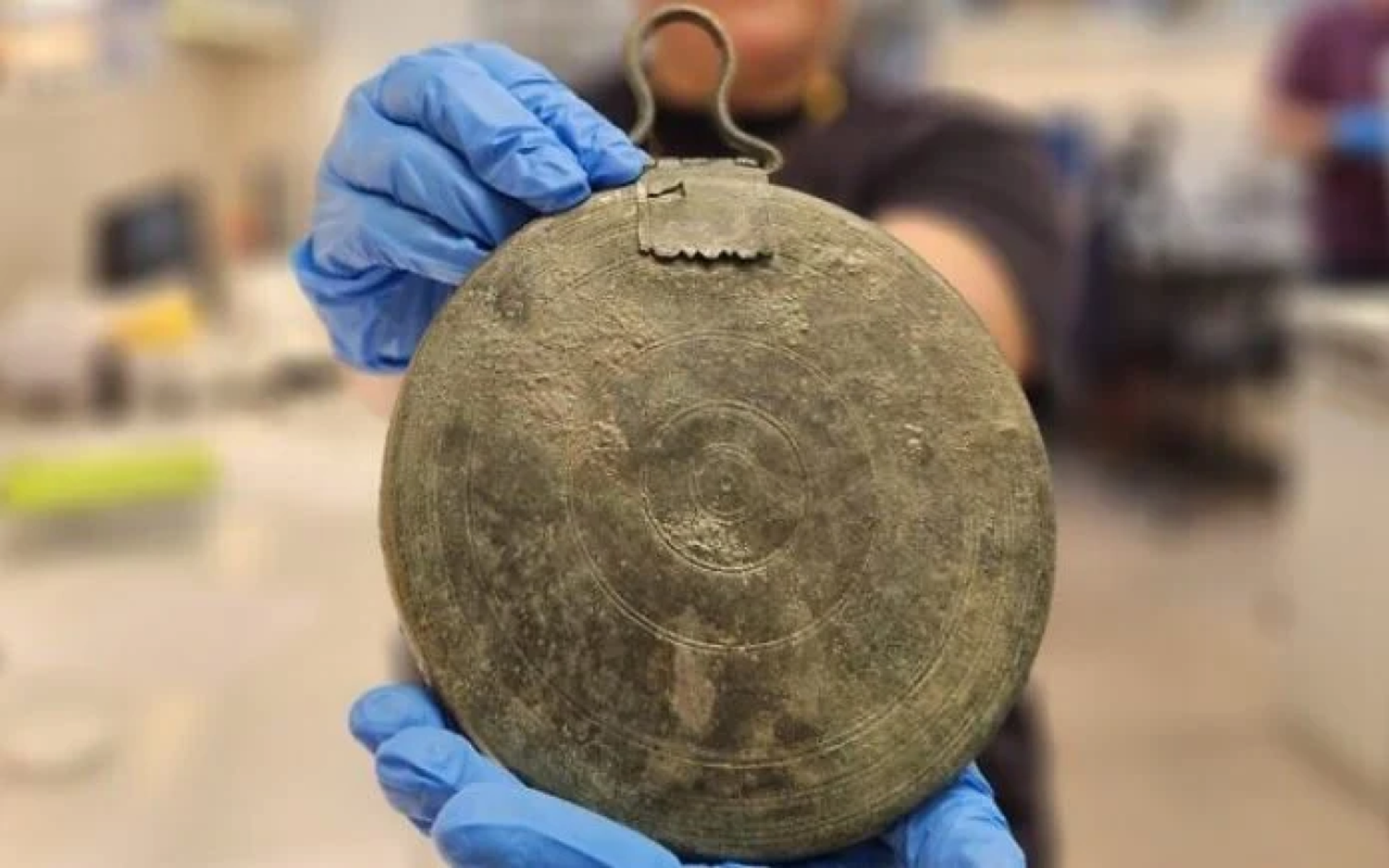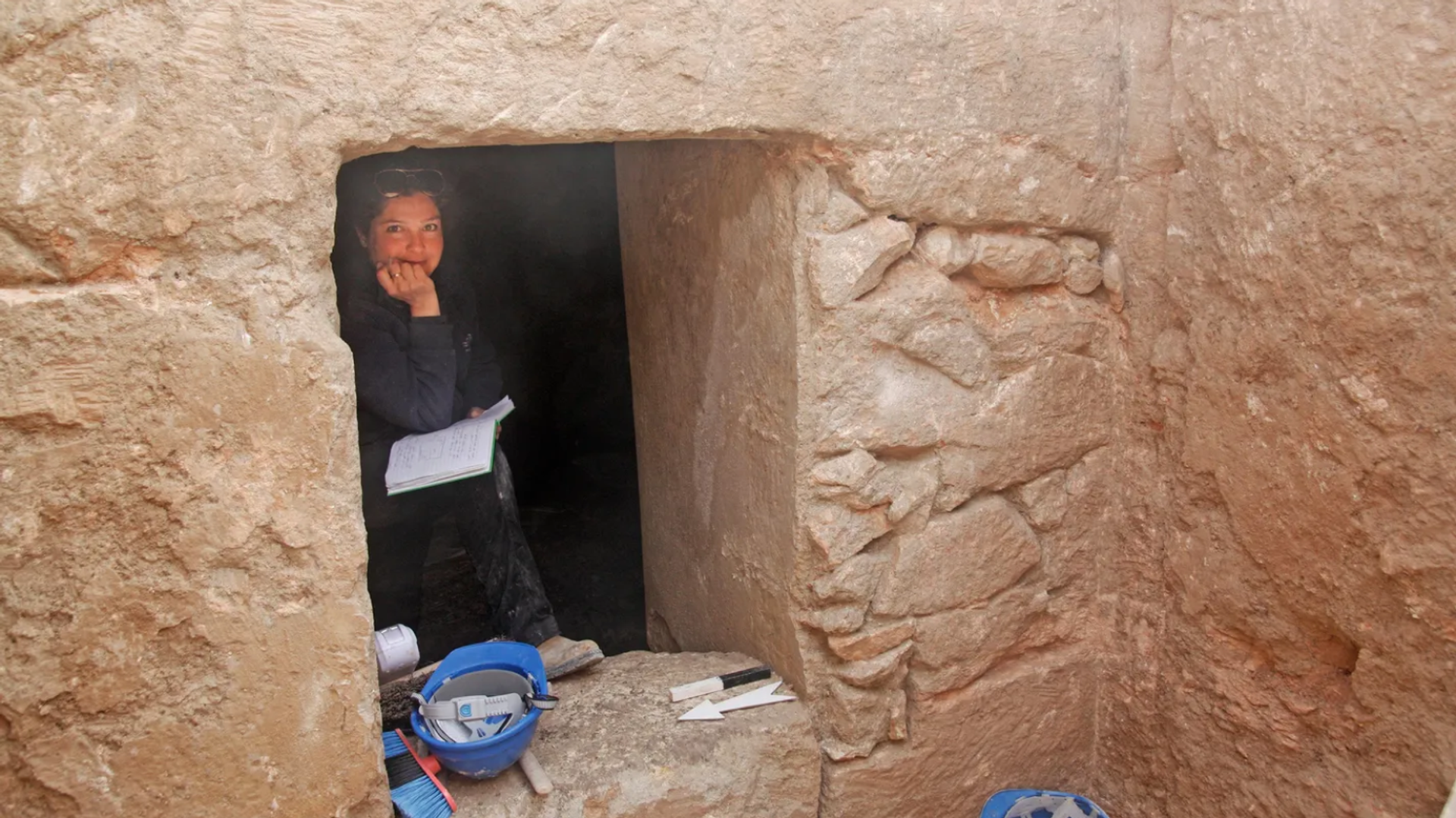Israeli Archaeologists Find Possible First Known Grave of Ancient Greek Courtesan
Subscribe
Archaeologists believe they may have found the grave of a Hetaira, a type of upper-class courtesan from Ancient Greece, for the first time along the old road from Jerusalem to Hebron.
The Israeli Antiquities Authority (IAA) announced the find on Wednesday, estimating the woman lived some 2,300 years ago, around the time of Alexander the Great, a Macedonian Greek king who conquered the region from the Persian Empire.
Hetairae were part of the elite circles of Greek society, and although they were prostitutes, they were allowed to be educated and amass wealth and power. Thus, why no identifiable grave of a hetaira has ever been found until this point has been something of a mystery to archaeologists and historians.

Archaeologist Liat Oz of the Israel Antiquities Authority at the entrance to the likely grave of a Greek hetaira on the ancient road between Jerusalem and Hebron.
Guy Stiebel of Tel Aviv University told Israeli media that while there’s no certainty the grave site found in Jerusalem’s Talpiot neighborhood belonged to a hetaira, it seems the most likely interpretation of the evidence.
“There are times the stars align and the anomalies ultimately converge to one scenario,” he said. “There are rare cases where you have to say: that’s what it is.”
Stiebel, along with Liat Oz of the Israel Antiquities Authority, jointly authored a paper on the find, which is set to be published in Hebrew in the peer-reviewed journal New Studies on Jerusalem.
The tomb was found in 2019, carved into the limestone bedrock on a hillside near the road from Jerusalem south to Hebron and includes an entrance room and interior burial chamber, both of which were coated in plaster.
The woman’s remains were first cremated, and her bones were buried with a number of items, including a bronze mirror inside a case and some nails, which were held to have magical properties by many in the ancient world. The whole thing was then sealed with a massive stone and bitumen gathered from the nearby Dead Sea.

A bronze mirror that probably belonged to a hetaira, an ancient Greek courtesan, found in a tomb south of Jerusalem
© Yoli Schwartz/Israel Antiquities Authority
According to the archaeologists, this was not at all typical for burial customs of the time in Greece or Judea, adding to the mystery of the site. It was dated to the Hellenistic period by the mirror found inside, which matches statues from that time portraying women holding mirrors.
“The mirror was a gender-specific artifact, identified in the ancient period only with women,” Stiebel explained. “Not that men didn’t preen, but there is no ancient depiction of them reflecting their glories in a mirror. A mirror was a woman’s property, part of the female kit. Since this one contained 600 grams of metal, it was a very precious item.”
Once they had determined it was most likely a powerful woman, the archaeologists said the most logical conclusion was that she was likely a hetaira, since the wives of military officers and aristocrats rarely traveled when their husbands did and would have been at home.
“We know from historic records that this was happening and we know that some [hetairae] joined generals or rulers on their campaigns – famously, the hetaira Thais joined Alexander on the road and he didn’t like her to be far,” Stiebel said. “When they conquered Persepolis, Thais was the one who some say stood behind the decision to burn the city to the ground.”





